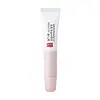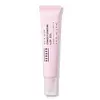What's inside
What's inside
 Key Ingredients
Key Ingredients

 Benefits
Benefits

 Concerns
Concerns

 Ingredients Side-by-side
Ingredients Side-by-side

Hydrogenated Polyisobutene
EmollientMicrocrystalline Wax
Emulsion StabilisingPentaerythrityl Tetraisostearate
EmollientButyrospermum Parkii Butter
Skin ConditioningDextrin Palmitate/Ethylhexanoate
EmulsifyingGlycerin
HumectantPolyethylene
AbrasiveDehydroacetic Acid
PreservativeDimethicone
EmollientDisteardimonium Hectorite
StabilisingButylene Glycol
HumectantSorbitan Isostearate
EmulsifyingCamellia Japonica Seed Oil
EmollientPanax Ginseng Root Water
MaskingAngelica Acutiloba Root Extract
Skin ConditioningOphiopogon Japonicus Root Extract
Skin ConditioningBupleurum Chinense Root Extract
AstringentOzokerite
Emulsion StabilisingHc Red No. 8
CI 77491
Cosmetic ColorantCaprylic/Capric Triglyceride
MaskingTocopherol
AntioxidantTocopheryl Acetate
AntioxidantTriethylhexanoin
MaskingTitanium Dioxide
Cosmetic ColorantPolyglyceryl-2 Diisostearate
EmulsifyingPolyglyceryl-2 Dipolyhydroxystearate
Skin ConditioningPolyglyceryl-2 Triisostearate
EmulsifyingPolyhydroxystearic Acid
EmulsifyingPropylene Carbonate
SolventHydrolyzed Collagen
EmollientParfum
MaskingHydrogenated Polyisobutene, Microcrystalline Wax, Pentaerythrityl Tetraisostearate, Butyrospermum Parkii Butter, Dextrin Palmitate/Ethylhexanoate, Glycerin, Polyethylene, Dehydroacetic Acid, Dimethicone, Disteardimonium Hectorite, Butylene Glycol, Sorbitan Isostearate, Camellia Japonica Seed Oil, Panax Ginseng Root Water, Angelica Acutiloba Root Extract, Ophiopogon Japonicus Root Extract, Bupleurum Chinense Root Extract, Ozokerite, Hc Red No. 8, CI 77491, Caprylic/Capric Triglyceride, Tocopherol, Tocopheryl Acetate, Triethylhexanoin, Titanium Dioxide, Polyglyceryl-2 Diisostearate, Polyglyceryl-2 Dipolyhydroxystearate, Polyglyceryl-2 Triisostearate, Polyhydroxystearic Acid, Propylene Carbonate, Hydrolyzed Collagen, Parfum
Hydrogenated Polyisobutene
EmollientPolybutene
Hydrogenated Styrene/Isoprene Copolymer
Tocopheryl Acetate
AntioxidantTocopherol
AntioxidantOlea Europaea Fruit Oil
MaskingSesamum Indicum Seed Oil
EmollientSimmondsia Chinensis Seed Oil
EmollientMacadamia Integrifolia Seed Oil
Skin ConditioningGlycine Soja Oil
EmollientCamellia Sinensis Leaf Extract
AntimicrobialPentaerythrityl Tetra-Di-T-Butyl Hydroxyhydrocinnamate
AntioxidantButyrospermum Parkii Butter
Skin ConditioningGlycerin
HumectantHydrogenated Polyisobutene, Polybutene, Hydrogenated Styrene/Isoprene Copolymer, Tocopheryl Acetate, Tocopherol, Olea Europaea Fruit Oil, Sesamum Indicum Seed Oil, Simmondsia Chinensis Seed Oil, Macadamia Integrifolia Seed Oil, Glycine Soja Oil, Camellia Sinensis Leaf Extract, Pentaerythrityl Tetra-Di-T-Butyl Hydroxyhydrocinnamate, Butyrospermum Parkii Butter, Glycerin
Ingredients Explained
These ingredients are found in both products.
Ingredients higher up in an ingredient list are typically present in a larger amount.
This ingredient is also known as shea butter. It is an effective skin hydrator and emollient.
Emollients help soothe and soften your skin. It does this by creating a protective film on your skin. This barrier helps trap moisture and keeps your skin hydrated. Emollients may be effective at treating dry or itchy skin.
Shea butter is rich in antioxidants. Antioxidants help fight free-radicals, or molecules that may harm the body. It is also full of fatty acids including stearic acid and linoleic acid. These acids help replenish the skin and keep skin moisturized.
While Shea Butter has an SPF rating of about 3-4, it is not a sunscreen replacement.
Shea butter may not be fungal acne safe. We recommend speaking with a professional if you have any concerns.
Learn more about Butyrospermum Parkii ButterGlycerin is already naturally found in your skin. It helps moisturize and protect your skin.
A study from 2016 found glycerin to be more effective as a humectant than AHAs and hyaluronic acid.
As a humectant, it helps the skin stay hydrated by pulling moisture to your skin. The low molecular weight of glycerin allows it to pull moisture into the deeper layers of your skin.
Hydrated skin improves your skin barrier; Your skin barrier helps protect against irritants and bacteria.
Glycerin has also been found to have antimicrobial and antiviral properties. Due to these properties, glycerin is often used in wound and burn treatments.
In cosmetics, glycerin is usually derived from plants such as soybean or palm. However, it can also be sourced from animals, such as tallow or animal fat.
This ingredient is organic, colorless, odorless, and non-toxic.
Glycerin is the name for this ingredient in American English. British English uses Glycerol/Glycerine.
Learn more about GlycerinHydrogenated Polyisobutene is a synthetic polymer. Polymers are compounds with high molecular weight. Hydrogenated Polyisobutene is an emollient and texture enhancer.
In one study, Hydrogenated Polyisobutene showed better skin hydration levels than Caprylic/Capric Triglyceride. As an emollient, it helps keep your skin soft and hydrated by trapping moisture in.
Hydrogenated Polyisobutene is often used as a mineral oil replacement.
Learn more about Hydrogenated PolyisobuteneTocopherol (also known as Vitamin E) is a common antioxidant used to help protect the skin from free-radicals and strengthen the skin barrier. It's also fat soluble - this means our skin is great at absorbing it.
Vitamin E also helps keep your natural skin lipids healthy. Your lipid skin barrier naturally consists of lipids, ceramides, and fatty acids. Vitamin E offers extra protection for your skin’s lipid barrier, keeping your skin healthy and nourished.
Another benefit is a bit of UV protection. Vitamin E helps reduce the damage caused by UVB rays. (It should not replace your sunscreen). Combining it with Vitamin C can decrease sunburned cells and hyperpigmentation after UV exposure.
You might have noticed Vitamin E + C often paired together. This is because it is great at stabilizing Vitamin C. Using the two together helps increase the effectiveness of both ingredients.
There are often claims that Vitamin E can reduce/prevent scarring, but these claims haven't been confirmed by scientific research.
Learn more about TocopherolTocopheryl Acetate is AKA Vitamin E. It is an antioxidant and protects your skin from free radicals. Free radicals damage the skin by breaking down collagen.
One study found using Tocopheryl Acetate with Vitamin C decreased the number of sunburned cells.
Tocopheryl Acetate is commonly found in both skincare and dietary supplements.
Learn more about Tocopheryl Acetate